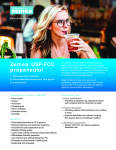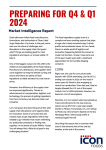PureCircle invests in stevia breeding program for sweeter leaves
US food and beverage manufacturers have been rushing to launch products that incorporate the natural, zero-calorie sweetener since the Food and Drug Administration (FDA) issued its first letters saying the stevia-derived sweetener rebaudioside A, or Reb A, was generally recognized as safe (GRAS) in December 2008. Reb A is thought to be the sweetest component of the stevia leaf, among its other sweet elements, called steviol glycosides.
Now, PureCircle has said a collaboration with horticultural researchers at Michigan State University (MSU) will look at producing “a new generation” of steviol glycosides, by breeding new stevia plant varieties with higher concentrations of Reb A, while trying to gain a better understanding of all of stevia’s sweet components.
PureCircle’s CEO Magomet Malsagov said: “The incorporation of MSU’s leading edge research combined with PureCircle’s industry leading, proprietary varieties will ensure that we continue to lead the industry with sustainable agriculture while improving the economics for both farmers and our customers. The results will aid in PureCircle’s continued worldwide expansion of Reb A volumes as well as increase our leadership in the next generation of steviol glycoside sweeteners.”
Improving the stevia supply chain is a major focus of suppliers’ efforts to bring prices of the sweetener down. Reb A currently sells for around $300 a kilogram, according to market research organization Leatherhead International, high enough to pose a barrier for some manufacturers. PureCircle hopes that new varieties – developed through conventional plant breeding techniques – will help provide a more affordable supply for its customers.
PureCircle USA’s marketing director Jason Hecker told FoodNavigator-USA.com: “Our entire focus is towards driving the ingredient to the mainstream. The more you can drive up the level of sweetness in the leaf, the more you can drive down the cost of the product.”
He added that stevia is still a relatively new food ingredient in the United States, and therefore there is still a lot to be learned about the various steviol glycosides within the leaf, and how they work together.
PureCircle said the MSU project would also look to breed plants that are better suited to different growing conditions around the world in order to increase yield, such as developing stevia that is more resistant to drought.
MSU’s lead researcher on the project Dr. Ryan Warner said: “We are excited to partner with an industry leading company like PureCircle to bring our cutting edge knowledge and experience in horticultural plant breeding and genetics to this exciting new crop. This is a great example of combining the strengths of industry and academia to bring value to consumers.”












